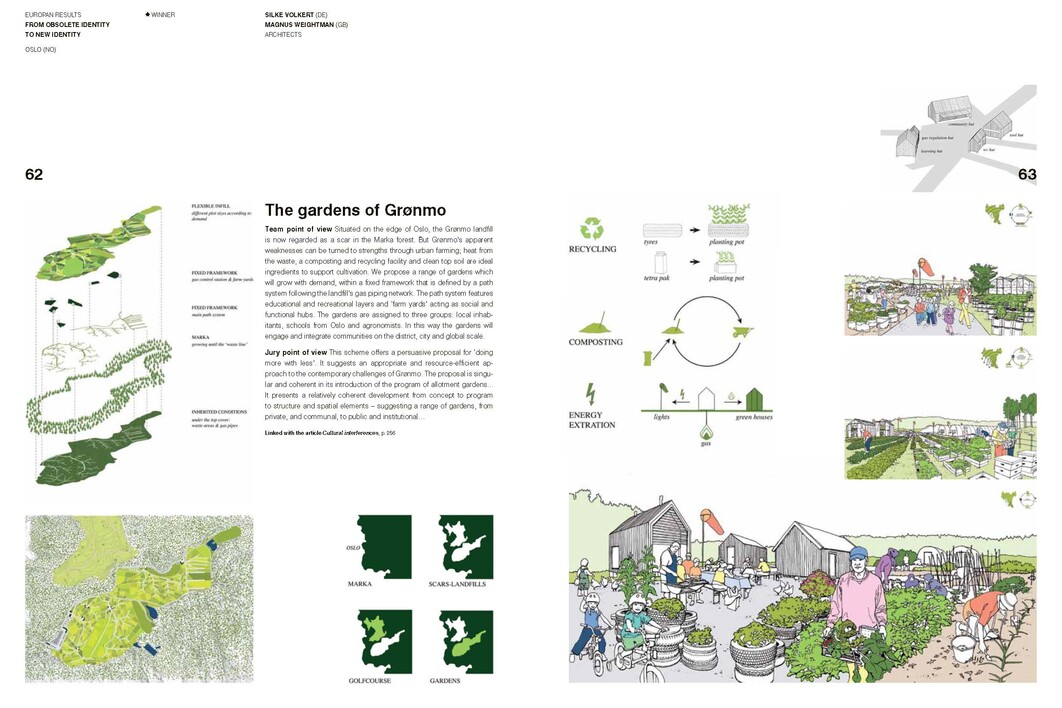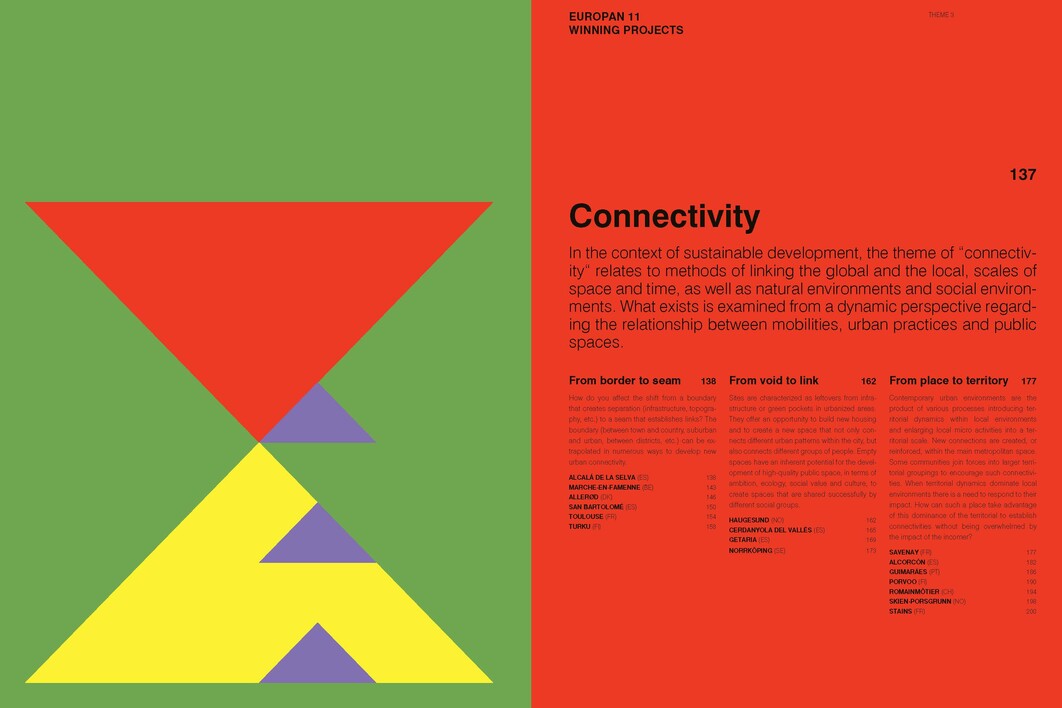Europan 11 results
- Edited by Europan
- 276 pages
- June 2012
- Format 21x28cm
- Public price: €25.00 (Postage not included)
- Back to list

Reconnections, connecting the separate and linking the divided
For the eleventh session of the competition, EUROPAN is publishing the catalogue of prize-winning projects in the 49 European towns situated in the 17 countries taking part.
The 95 prize-winning projects (41 winners, 54 runners-up) of the Europan 11 session are presented in first part of the catalogue, classified into site families (Identity / Uses / Connectivity). It provides access to all the session results with the points of view of the team and the jury.
The second part of the catalogue formulates interpretations around the most emblematic winning projects, based on 5 hypotheses of “reconnection”, accompanied by the perspectives of a number of European experts:
1 – Reshaping shared spaces, point of view of Oliver Schulze, architect, director of Gehl Architects in Copenhagen (DK)
Today a sustainable approach to city development demands the introduction of social and community spaces, where people can share qualities relating to space and time. These“shared spaces”evolve new features that do not necessarily correspond to those associated with the historical term“public space”.
2 – Reconnecting with uses, point of view of José María Ezquiaga, architectand urban planner in Madrid (ES)
The dynamics of urban projects no longer arise only from their inherent spatial qualities but more often from their ability to potentiate a vibrant social life, introducing new activities that interact with existing programmes to re-establish new physical and social connections between the site and its context.
3 – Cultural interferences, point of view of Enrique Sobejano, architect in Madrid (ES)/ Berlin (DE)
Cultural references act as generators that import elements into projects which can define strategies for reconnection to their environment. They can be based on the physical characteristics of the site or derived from more spiritual elements. They can be also narratives on social practices and local specificities.
4 – Common resources and mutation, point of view of Mathieu Delorme, engineer, landscape architect, urban planner in Paris (FR)
The finite nature of resources raises the question of scarcity and therefore of value. With the global environmental crisis, it is essential that designers should incorporate them into urban projects, treating them as shared resources not only to be preserved, but to be enhanced in a quest for a hybrid compatibility between city and nature.
5 – Rhythms and timeframes, point of view of Chris Younès, philosopher, anthropologist, director of the research laboratory Gerphau (FR)
Generated by the multiple timeframes of activity in the contemporary city, urban rhythms have intensified to such a point that we now speak of 24-hour cities. The use of time should be taken into account in urban projects as a tool of reconnection, developing relations between citizens and urban and natural rhythms.





















